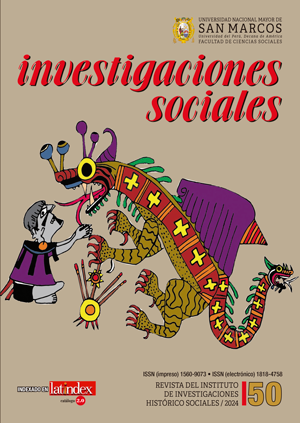Chroniclers, travelers and archaeologists: Five Centuries of Discoveries and Research in the Huaura Valley, Peru
DOI:
https://doi.org/10.15381/is.n50.29824Keywords:
Archaeology, Huaura valley, Chronology, Historiography, MethodologyAbstract
An account of archaeological research conducted in the Huaura Valley, Peru, is presented, covering from the first mentions of the valley in chronicles and travel accounts, to archaeological investigations in the 20th and 21st century, that chronologically spans from the Late Preceramic period to the Late Horizon. The importance of the Bandurria site is highlighted, which evidences a complex occupation during Late Preceramic (3500-1800 BC) with monumental architecture and domestic areas, and which would be one of the first manifestations of complexity in the Norte Chico until its collapse around 1700 BC, possibly due to climatic and geological changes. Later occupations are then addressed, such as the Vichama site from the Initial Period and the U-shaped temple of Chacra Socorro. The Acaray fortress is noteworthy, with occupations from the Early Horizon and Late Intermediate Period. A significant finding is the identification of the Huacho ceramic style at the Cerro Colorado site, which questions the Chancay influence in the valley during the Late Intermediate Period. The article emphasizes the need for more research to fill chronological gaps and better understand the cultural development of the valley. Additionally, it warns about the rapid destruction of archaeological heritage due to agricultural and urban expansion, urging protective actions to preserve this important cultural legacy.
Downloads
Published
Issue
Section
License
Copyright (c) 2025 Alejandro Chu Barrera

This work is licensed under a Creative Commons Attribution 4.0 International License.
AUTHORS RETAIN THEIR RIGHTS:
a. Authors retain their trade mark rights and patent, and also on any process or procedure described in the article.
b. Authors retain their right to share, copy, distribute, perform and publicly communicate their article (eg, to place their article in an institutional repository or publish it in a book), with an acknowledgment of its initial publication in Investigaciones Sociales.
c. Authors retain theirs right to make a subsequent publication of their work, to use the article or any part thereof (eg a compilation of his papers, lecture notes, thesis, or a book), always indicating the source of publication (the originator of the work, journal, volume, number and date).






